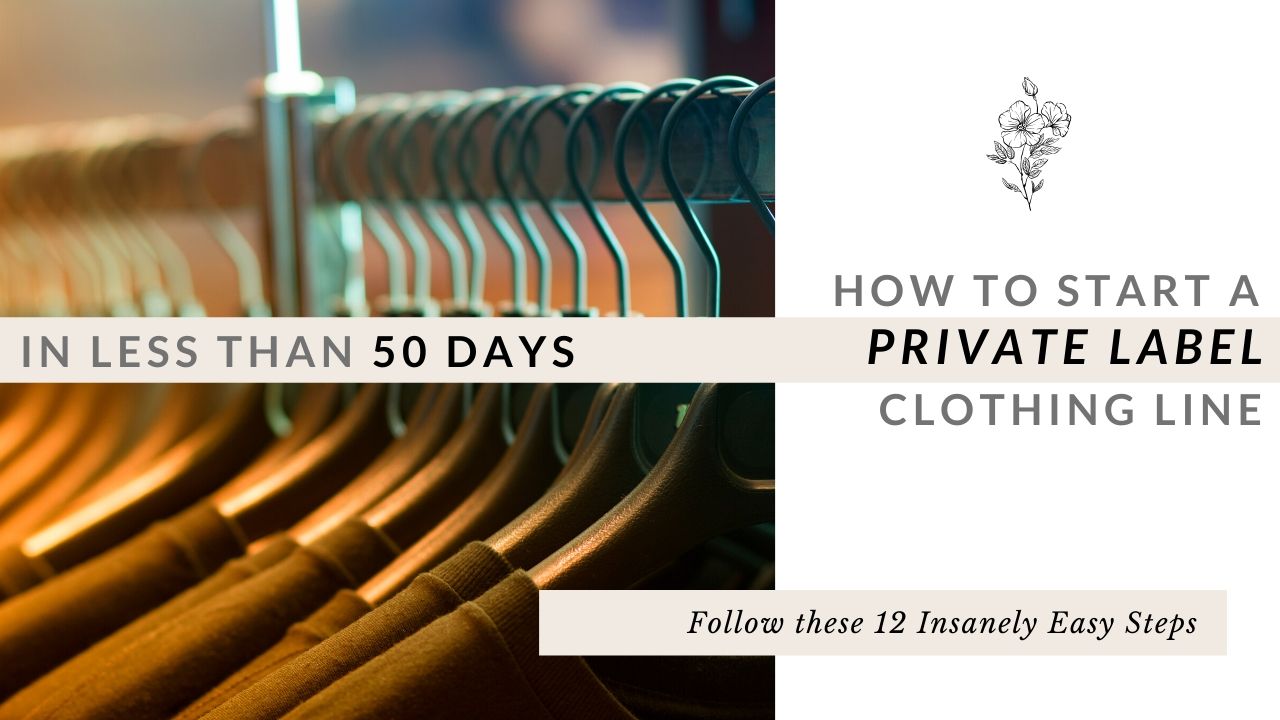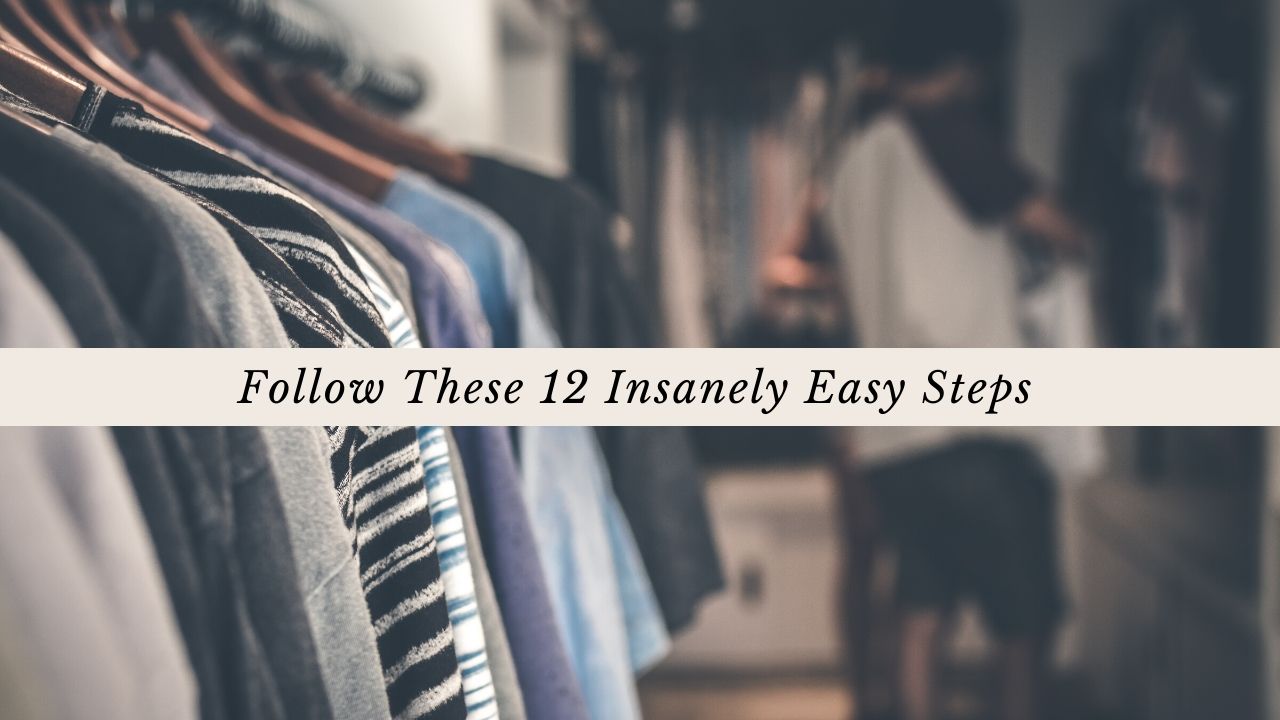How to Start a Private Label Clothing Line in less than 50 days- 12 Insanely Easy Steps

Tough it was few years back to launch your own private label clothing line—not today!!!! In fact, introducing your own apparel line has never been this easier and affordable.
So if you’re looking to head to this direction, get rid of all the myths and nays. These days, it’s just as easier done as it is said.
Here are 12 definite and insanely easy steps to introduce (and scale) your own awesome clothing line business into the market-

PHASE I- Where You Understand Things
Step 1: Find your Niche market
In the clothing market, there are many small segments. When beginning, as a nice strategy, the pro advice goes that you should start small and explore limited market niches. So don’t plan to be ‘everything for everyone’, but find out the type of wears you want to have under your label and the consumer group your want to target. Take your time here; factor everything from the current trends and future predictions to your own personal interests.
Step 2: Do a Research on your Target Audience
Now you know the consumer group you will be targeting; could be anyone- women, men, kids, elders, 20s and more. Do a thorough research on this target audience and know more about them. Dive into the database available easily online and know about their definite needs and preferences, budget limit, buying habits, expectations, and more. The better you understand your potential customers, easier will it be for you to market and make sales.
Step 3: Read your Competitors’ Strategy
Although overlooked, doing a competitive analysis is one of the most important parts for any business—more so in the clothing scene where competition is higher than ever. So identify your “successful” competitors and learn more about them. Understand their wholesaling, marketing and selling strategies, and follow their footsteps in view of your own individual needs, requirements and business goals.
Step 4: Map a Business Plan
Now you have a basic (or detailed) understanding about your market, time to take a pen and paper and map a winning business plan. It doesn’t really have to be 100 pages long but try to be as definite as possible. Like the business model you’ll operate in, when and where are you going to invest your money, how you’re going to achieve your sales target, the time when you’re going to start making the desired profit and so forth.
PHASE II- Where You Do!
Step 5: Arrange for the Required Capital
Admittedly, launching your own private label clothing line has become relatively – and very – cheaper today. But you’re still going to need a decent amount of capital to not only start your business but also to scale and sustain it. So get to arranging for the investment amount; you can self-finance, ask money from the family, get loans, crowd-source, find angel investors or form partnership to divide the capital burden.
Step 6: Pick a Private Label Apparel Manufacturer
This one is possibly the most important part of this whole process—finding a good and reliable private label clothing manufacturer. The market is crowded with these manufacturers, all claiming to be the best. So you must put an extra effort to find a renowned and reputed partner who can meet your distinct wholesale and budget needs adequately.
Step 7: Design your Apparels
Time now to design your private label apparel line and add to it a personalized flavor! Since you know who exactly you’re going to target and know about their definite needs and preferences, this step won’t really be that hard; easier, in fact, with a good manufacturer by your side. The top manufacturers offer more than just the wholesale; their years of industry experience and expertise are invaluable and can help your seamlessly.
Step 8: Fulfill the other Technical Ends
There’s a host of other technical ends that needs your attention. If you’re launching your business on a large-scale, there are few legal requirements that you would need to fill; hire a lawyer for that. Also focus on other things, like your online and brick-mortar stores, your warehouse, the shipping carrier, and more.
PHASE III- Where You Let the World Know, and Sell
Step 9: Implement your PR Strategy
To make an impactful entry in the market, you need to have just as amazing PR strategy; to capture the audiences’ attention, to inform everyone about your brand and products in interesting ways, to tell stories to people so that they connect with your brand. This isn’t as difficult. Countless resources are available online that can guide you easily with remarkable and creative strategies. When confused, you can always outsource professionals.
Step 10: Leverage on Social Media Platforms
Social media marketing is essential today. And with the kind of targeting features that platforms like Facebook, Twitter and Instagram offers today, converting is quite easier—that, provided, the campaigns are interesting and worth-noting. So get on different social platforms, be a bit strategic with your approach and start promoting your brands and products in front of your target customers.
Step 11: Invest in Paid promotions
Even when limited in your budget, you must be open to invest few bucks in paid promotion. It is essential. Given the high competition in the market, depending solely on organic result is a not a good idea. So spend on advertisements on social media platforms, Google, contact cards, banners and more. Be careful not to spend too much without seeing any evident return though. Strive to keep Customer Acquisition Cost (CAC) as low as possible.
Step 12: Offer Customers Personalized Post-Sale Service
The transaction doesn’t stop after the sale is made. If you’re looking to make a lasting impression on the customers and turn one-time buyers into repeated customers, you must offer a striking and personalized post-sale service. Aim to engage them and offer a pleasant experience, at the same time pushing for additional and complementing products. Customer retention has higher and long-term return than what you get from acquiring new customers.
These are 12 insanely easy steps – divided into 3 phases – to start your own private label clothing line. Sure there would be a lot more challenges on the way, and a lot more to care about (like pricing). But given the current clothing market condition, it’s all very easy. All you need to do is be smart with your decisions and executions.


















